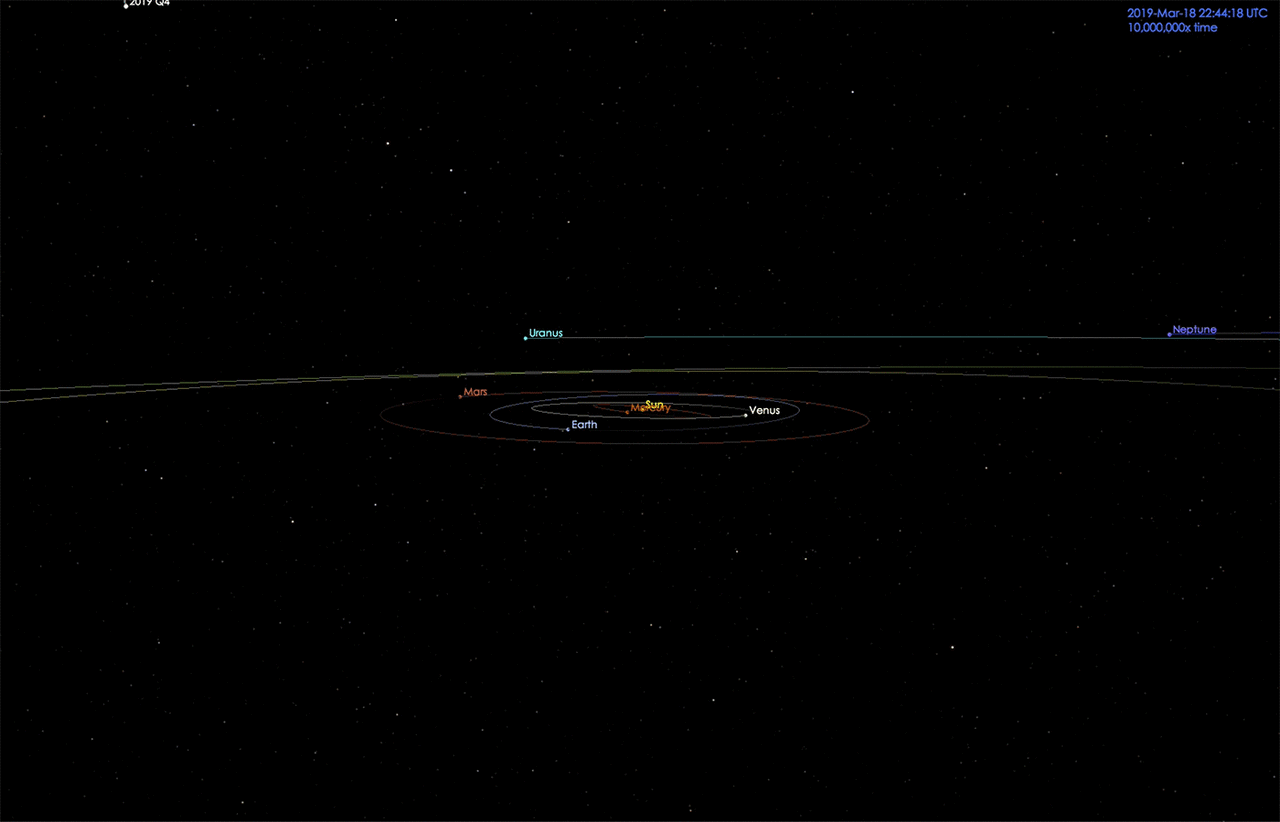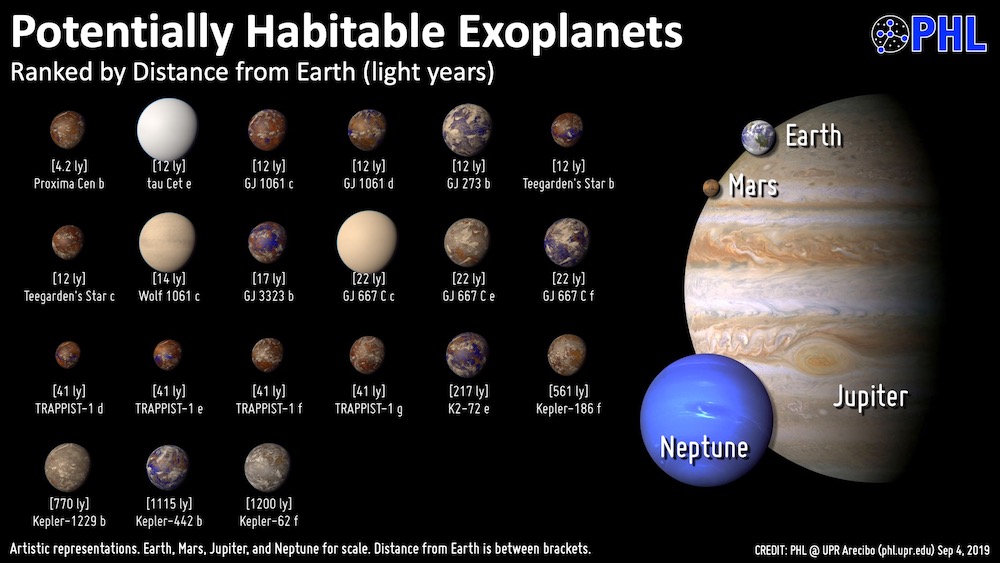September 27, 2019
While We Weren't Looking
One of the things that comes up from time to time when discussing futurism and space travel is that there is a theoretical (if tenuous) basis for violating the generally accepted impossibility of superluninal travel.
Developed by an acclaimed Mexican scientist named Dr. Miguel Alcubierre, the Alcubierre Warp Drive sounds superficially similar to the propulsion in Star Trek, but is based in real physics..albeit very theoretical physics.
You see, since the speed of light is very firmly established as an insurmountable obstacle Dr. Alcubierre was only able to develop a mathematically sound way of violating this by using negative values for certain variables....in this case, um, mass.
In the above interview, Dr. Alcubierre is quite up front that this is a dubious prospect as negative mass is not something that one encounters...it is simply not forbidden to exist, we're not talking about anti-matter...we're talking about "stuff" with a value of less than nothing.
So unless someone invents/discovers "negative mass" this is basically at the intersection of physics, mathematics, special pleading and vapourware.

"Unless..."
Now, one of The Brickmuppet's Crack Team of Science Babes points us to this post at Next Big Future which offhandedly mentions that scientists from The University of Rochester generated negative mass last year and further poking around reveals that Scientists in Washington did so in 2017.
Seems a rather LARGE thing to have avoided news coverage, but it does appear to be legit. This is not to say that the Alcubierre Drive is imminent, or even practical, but it is just a tad more possible.
The above link that started all this concerns research paths on various FTL proposals and discusses the humbling obstacles to being able to do this such as a million fold increase in the sensitivity of various sensors i order to observe adjustments in the warp fields. That is indeed a large hurdle...but for the first time scientists know what they need in the way of calibration and sensors to study the problem.
Scientists now know a little more of what they don't know and that is actually progress.
If negative mass can be produced in any quantity (and there are formidable issues with that) then even if there is no practical result to the warp drive research, the negative mass has some interesting (potential & theoretical) applications that border on Clarke-Tech.
And even if the Warp Drive is possible, it's likely that we'll never see anything like FTL in our lifetime, but the fact that scientists are discovering things like negative matter point to a very bright future indeed, if we can avoid some dystopian speedbumps on the road to tomorrow.
* Science Babe by Tony Taka
Developed by an acclaimed Mexican scientist named Dr. Miguel Alcubierre, the Alcubierre Warp Drive sounds superficially similar to the propulsion in Star Trek, but is based in real physics..albeit very theoretical physics.
You see, since the speed of light is very firmly established as an insurmountable obstacle Dr. Alcubierre was only able to develop a mathematically sound way of violating this by using negative values for certain variables....in this case, um, mass.
In the above interview, Dr. Alcubierre is quite up front that this is a dubious prospect as negative mass is not something that one encounters...it is simply not forbidden to exist, we're not talking about anti-matter...we're talking about "stuff" with a value of less than nothing.
So unless someone invents/discovers "negative mass" this is basically at the intersection of physics, mathematics, special pleading and vapourware.

"Unless..."
Now, one of The Brickmuppet's Crack Team of Science Babes points us to this post at Next Big Future which offhandedly mentions that scientists from The University of Rochester generated negative mass last year and further poking around reveals that Scientists in Washington did so in 2017.
The above link that started all this concerns research paths on various FTL proposals and discusses the humbling obstacles to being able to do this such as a million fold increase in the sensitivity of various sensors i order to observe adjustments in the warp fields. That is indeed a large hurdle...but for the first time scientists know what they need in the way of calibration and sensors to study the problem.
Scientists now know a little more of what they don't know and that is actually progress.
If negative mass can be produced in any quantity (and there are formidable issues with that) then even if there is no practical result to the warp drive research, the negative mass has some interesting (potential & theoretical) applications that border on Clarke-Tech.
And even if the Warp Drive is possible, it's likely that we'll never see anything like FTL in our lifetime, but the fact that scientists are discovering things like negative matter point to a very bright future indeed, if we can avoid some dystopian speedbumps on the road to tomorrow.
* Science Babe by Tony Taka
Posted by: The Brickmuppet at
10:37 PM
| Comments (2)
| Add Comment
Post contains 450 words, total size 4 kb.
September 18, 2019
There Are Space Tomatoes For Sale!
Posted by: The Brickmuppet at
05:14 PM
| No Comments
| Add Comment
Post contains 6 words, total size 1 kb.
September 16, 2019
Borisov Intercept Proposal
In the recent post on the extra-solar comet Borisov, we used the rocketry and ballistics expertise bestowed by our liberal arts education to to recklessly speculate that it might be possible to launch a quick and dirty probe to get a close up look at this visitor from beyond.
Now one of The Brickmuppet's Crack Team of Science Babes has found a proposal to do just that, presumably after slogging through academic sites for many hours.

Now one of The Brickmuppet's Crack Team of Science Babes has found a proposal to do just that, presumably after slogging through academic sites for many hours.

"Nah, I just checked out Centauri Dreams."
The paper is using the SLS as it's baseline launch vehicle, and not the larger and more powerful and more or less existing Space-X Super Heavy.
However, this paper by actual rocket scientists, points out that the rather significant detail that the launch window for a conventional intercept of this thing was actually a bit over a year ago. Borisov is coming no closer to the Earth than Mars before it speeds off into the void.
Instead, the scientists are looking at a high energy, multiple slingshot trajectory and is proposing a launch in 2030, and an intercept in 2045, which gives plenty of time to work things out in a more conventional manner.
Interestingly, it also notes that a mission to Omuamua, using a New Horizons class probe is still possible. Which is quite awesome.
However, this paper by actual rocket scientists, points out that the rather significant detail that the launch window for a conventional intercept of this thing was actually a bit over a year ago. Borisov is coming no closer to the Earth than Mars before it speeds off into the void.
Instead, the scientists are looking at a high energy, multiple slingshot trajectory and is proposing a launch in 2030, and an intercept in 2045, which gives plenty of time to work things out in a more conventional manner.
Interestingly, it also notes that a mission to Omuamua, using a New Horizons class probe is still possible. Which is quite awesome.
Posted by: The Brickmuppet at
06:30 PM
| No Comments
| Add Comment
Post contains 222 words, total size 2 kb.
September 14, 2019
Borisov
One of the questions that was left unanswered in the wake of the recent passing through the solar system of the interstellar object Omuamua was whether this was a vanishingly rare event, or if such interstellar objects pass through fairly frequently and we hadn't noticed them.
Well, there is now some evidence that it may be the latter.
While not yet officially confirmed to be an extrasolar object, C/2019 Q4 tentatively named Borisov, after its discoverer, is coming in at about solar system escape velocity and is expected to leave the solar system after doing a loop around the sun.

This is a rather larger object than Omuanua between 1 and 30 kilometers across and Astronomers will have time to examine it in considerable detail.
That's all we know now, but one of The Brickmuppet's Crack Team of Science Babes offers a bit of speculation....

It should be noted as well that Mr.Gennady Borisov, the Russian amateur astronomer who discovered this comet, pulled off quite the impressive feat with his homemade telescope found what the algorithms had missed.
[quote] Aside from how prominent or not Gennady’s comet will become, the most amazing thing is that he beat the automated surveys to the punch. These days nearly all comets and many asteroids are found by professional astronomers using robotic telescopes hooked up to sensitive cameras and computers. Large areas of the sky are covered each clear night. If a fuzzy, moving object is detected by the computer, astronomers are alerted, follow-up observations are made and the new object receives a letter, number and the survey’s name. That’s why there are a plethora of comets in the past 15 years with names like LINEAR (Lincoln Near-Earth Asteroid Survey), Pan-STARRS (Panoramic Survey Telescope & Rapid Response System), LONEOS (Lowell Observatory Near-Earth-Object Search) and others.
This one however, is named "Borisov".
Well, there is now some evidence that it may be the latter.
While not yet officially confirmed to be an extrasolar object, C/2019 Q4 tentatively named Borisov, after its discoverer, is coming in at about solar system escape velocity and is expected to leave the solar system after doing a loop around the sun.

.gif via JPL
This is a rather larger object than Omuanua between 1 and 30 kilometers across and Astronomers will have time to examine it in considerable detail.
That's all we know now, but one of The Brickmuppet's Crack Team of Science Babes offers a bit of speculation....

Art by Atomicspacemonkey
"Given that its closest approach to Earth will be in December, it is also possible (albeit unlikely) that a very austere probe might be sent. Note that Elon Musk is planning a full up launch of his super rocket in October, some kitbashed probe might make a better payload than the water that normally acts as ballast on these things."
It should be noted as well that Mr.Gennady Borisov, the Russian amateur astronomer who discovered this comet, pulled off quite the impressive feat with his homemade telescope found what the algorithms had missed.
[quote] Aside from how prominent or not Gennady’s comet will become, the most amazing thing is that he beat the automated surveys to the punch. These days nearly all comets and many asteroids are found by professional astronomers using robotic telescopes hooked up to sensitive cameras and computers. Large areas of the sky are covered each clear night. If a fuzzy, moving object is detected by the computer, astronomers are alerted, follow-up observations are made and the new object receives a letter, number and the survey’s name. That’s why there are a plethora of comets in the past 15 years with names like LINEAR (Lincoln Near-Earth Asteroid Survey), Pan-STARRS (Panoramic Survey Telescope & Rapid Response System), LONEOS (Lowell Observatory Near-Earth-Object Search) and others.
This one however, is named "Borisov".
Posted by: The Brickmuppet at
09:38 PM
| Comments (1)
| Add Comment
Post contains 373 words, total size 4 kb.
This is Pretty Epic
Specifically, it involves EPIC201912552 and even more specifically EPIC201912552b a large terrestrial planet orbiting it.
K2-18b was discovered some years ago and, despite being theoretically in the habitable zone, was viewed as unlikely to have water or life due to its star's mercurial nature. It orbits a red dwarf star quite close in and the dwarf in question is one that flares a lot, and emits considerible UV radiation.
However, Hubble has discovered that the planet is, in fact quite wet. This could mean it's a Neptune type planet that's boiling away or it might be a very large Earth like planet that has been able to retain its atmosphere due to high gravity and, perhaps, a strong magnetic field.
In either case, it's warm, wet ,and while quite unlike Earth in various ways it would seem now to have at least the potential for life of some kind....which is indeed pretty epic.
And logically, there ought not to be any downside.
Alas, it's 2019. There's always a downside. It seems that The Weather Channel has noted the clouds too and has begun running a story on K2 18b's weather, which means we can look forward to more weather reports of negligible relevance to us resulting in even LESS local coverage on the Weather Channel in the future.
In any event, such minor annoyances notwithstanding, that we're finding these things is pretty awesome. While water vapor has not been found on an earth sized, habitable zone world before now, there are quite a few potential candidates for life-bearing planets. Here is a conservative list of the exo-planets currently thought to be potentially habitable, minus K2-18b which was on it some years ago but was removed and has not, as of yet, been put back.

One of The Brickmuppet's Crack team of Science Babes explains...
With data from the Hubble Space Telescope, water vapor has been detected in the atmosphere of an exoplanet within the habitable zone of its host star. K2-18b, which is eight times the mass of Earth, is the only planet orbiting a star outside the solar system (or "exoplanetâ€) known to have both water and temperatures that could support life. Image credit: NASA's Goddard Space Flight Center
K2-18b was discovered some years ago and, despite being theoretically in the habitable zone, was viewed as unlikely to have water or life due to its star's mercurial nature. It orbits a red dwarf star quite close in and the dwarf in question is one that flares a lot, and emits considerible UV radiation.
However, Hubble has discovered that the planet is, in fact quite wet. This could mean it's a Neptune type planet that's boiling away or it might be a very large Earth like planet that has been able to retain its atmosphere due to high gravity and, perhaps, a strong magnetic field.
In either case, it's warm, wet ,and while quite unlike Earth in various ways it would seem now to have at least the potential for life of some kind....which is indeed pretty epic.
And logically, there ought not to be any downside.
Alas, it's 2019. There's always a downside. It seems that The Weather Channel has noted the clouds too and has begun running a story on K2 18b's weather, which means we can look forward to more weather reports of negligible relevance to us resulting in even LESS local coverage on the Weather Channel in the future.
In any event, such minor annoyances notwithstanding, that we're finding these things is pretty awesome. While water vapor has not been found on an earth sized, habitable zone world before now, there are quite a few potential candidates for life-bearing planets. Here is a conservative list of the exo-planets currently thought to be potentially habitable, minus K2-18b which was on it some years ago but was removed and has not, as of yet, been put back.

Posted by: The Brickmuppet at
01:45 PM
| No Comments
| Add Comment
Post contains 392 words, total size 4 kb.
<< Page 1 of 1 >>
44kb generated in CPU 0.1085, elapsed 0.6495 seconds.
29 queries taking 0.4881 seconds, 84 records returned.
Powered by Minx 1.1.6c-pink.
29 queries taking 0.4881 seconds, 84 records returned.
Powered by Minx 1.1.6c-pink.










